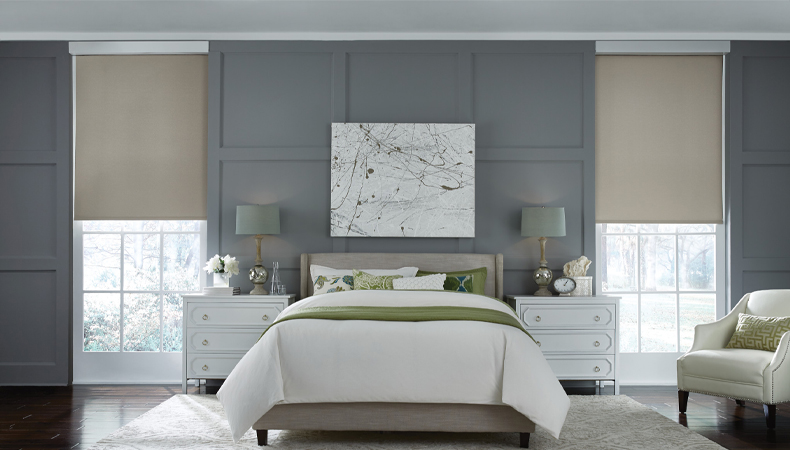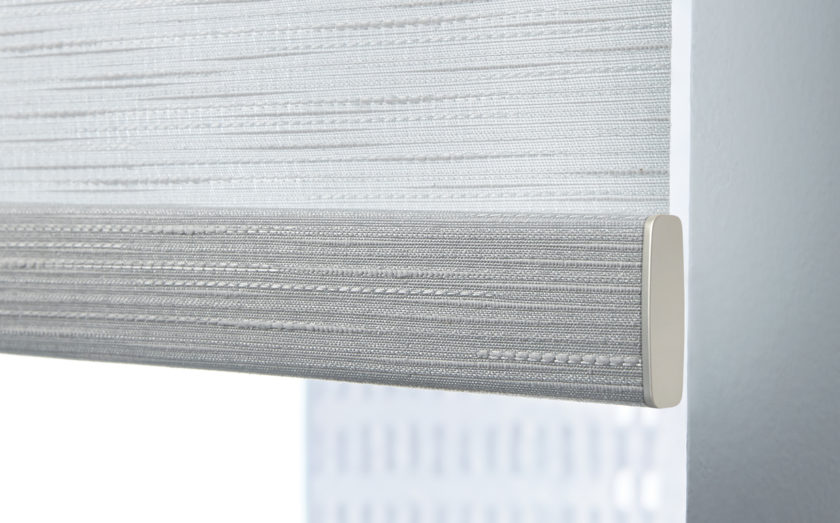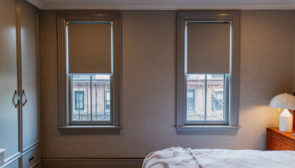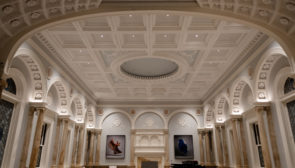Shade Design 101: Mounting, Fascias, and Hembars Explained

Once you’ve selected the right Lutron shade line for your home, whether it’s the wireless convenience of Sivoia or the exposed luxury of Palladiom, you’ll be faced with a series of design decisions. And while these shade design details might sound small, they have a big impact on both how your shades perform and how they look once installed.
In this part of our series, we’ll break down the three core design elements that affect your shade installation: mounting style, top treatments, and hembars. Whether you’re after a barely-there look or want your shades to make a statement, here’s what to know.
Inside Mount vs. Outside Mount: Framing the Decision

This is one of the first—and most important—style choices you’ll make. It determines where your shade sits in relation to the window frame, which directly affects aesthetics, light blocking, and privacy.
Inside Mount
- What it is: The shade is mounted inside the window jamb or recess.
- Pros: Clean, built-in look. May allow for more discreet hardware.
- Cons: Small gaps on each side of the fabric (to avoid scraping the frame) can let in light—making true blackout hard to achieve.
- Best for: Interiors where light gaps are acceptable (like kitchens or living rooms).
Outside Mount
- What it is: The shade is mounted outside the jamb—either on the wall or on the window casing.
- Pros: Excellent light control and privacy. Great for blackout shades and irregular window frames.
- Cons: More visible hardware and projection from the wall. May require a fascia, valance, or other solution to conceal hardware or finish the look.
- Best for: Bedrooms, media rooms, or any space where light leakage is a no-go. Also a must when inside-mounting is not an option.
Pro tip: If you’re aiming for blackout conditions, outside mount is your friend. Pair it with side channels and you’re in business.
Standard vs. Reverse Roll
Another design detail to consider is whether your shade fabric rolls off the back (standard roll) or the front (reverse roll) of the tube. Standard roll positions the fabric closer to the window or wall, which helps block more light but may cause the shade to pass in front of door or window hardware. Reverse roll brings the fabric forward, clearing handles or trim while creating a softer waterfall effect. This can be ideal for avoiding interference with cranks, locks, or decorative casings, though it may allow slightly more light to seep in at the top.

Top Treatments: Fascias, Valances, and Ceiling Pockets
Top treatments are all about hiding the mechanism that makes your shades move. Some shade lines make this part of the design (like Palladiom’s exposed brackets), but most homeowners prefer a clean, concealed look.
Fascia
- A sleek, aluminum cover that hides the roller and brackets.
- Available in finishes that match your hardware—or wrapped in the same fabric as your shade for a softer look.
- Common in Triathlon and Sivoia QS installations.
Valance
- Typically a fabric-covered or wood-wrapped box that conceals the roller.
- Can be customized to match interior trim or cabinetry.
Ceiling Pocket
- A recessed channel in the ceiling where the shade rolls up completely out of sight.
- Requires planning during construction or renovation.
- Offers the most minimal aesthetic—little to no visible shade hardware at all when retracted.
No Top Treatment
- Reserved for shades designed to show off their form, like Palladiom, where the exposed brackets are part of the appeal.
- Requires precise mounting and finish coordination.
Not sure what’s right for your home? Our team at TSP can walk you through the options, based on both your style and the architecture of your space.
Hembars: The Bottom Line (Literally)

The hembar is the rigid piece at the bottom of the shade. It keeps the fabric flat and weighted, and helps the shade roll evenly. But it also affects the visual finish—especially when shades are partially lowered.
Fabric-Wrapped Hembar
- Discreet and blended. Matches the fabric of the shade for a nearly invisible finish.
- Works well with most styles of interiors.
Exposed Hembar
- A polished aluminum or brushed metal finish that contrasts with the fabric.
- Available in various colors to complement hardware or wall accents.
- Often used to add a contemporary accent or tie into other metallic finishes in the room.
Palladiom Bottom Rail
- Part of the signature Palladiom look—precision-crafted and built to be quiet, balanced, and elegant.
Quick Note: While the hembar is aesthetic, it’s also functional. A poorly balanced or lightweight hembar can cause fabric to curl or sag over time.
Putting It All Together
Here’s how these choices interact:
| Design Element | Function | Best For |
| Inside Mount | Minimal look, tighter fit | Living spaces, contemporary designs |
| Outside Mount | Better light control/privacy | Bedrooms, media rooms |
| Fascia | Conceals roller hardware | Wall-mounted shades, clean finishes |
| Ceiling Pocket | Fully hidden shades | New construction or major renovations |
| Fabric-Wrapped Hembar | Seamless, soft look | Neutral or subtle interiors |
| Exposed Hembar | Metallic accent | Modern, design-forward spaces |
Next Up: Fabric Transparency & Blackout Solutions
Now that your mounting and hardware decisions are squared away, it’s time to talk fabric: how much light it lets through, how much privacy it gives, and how to get that perfect day-to-night balance.
In our next post, we’ll break down transparency levels (1%, 3%, 5%), blackout options, and when you might need side channels.
Want to see samples or mockups in your space? Contact us to schedule a tour of our award-winning showroom and see these in action!



